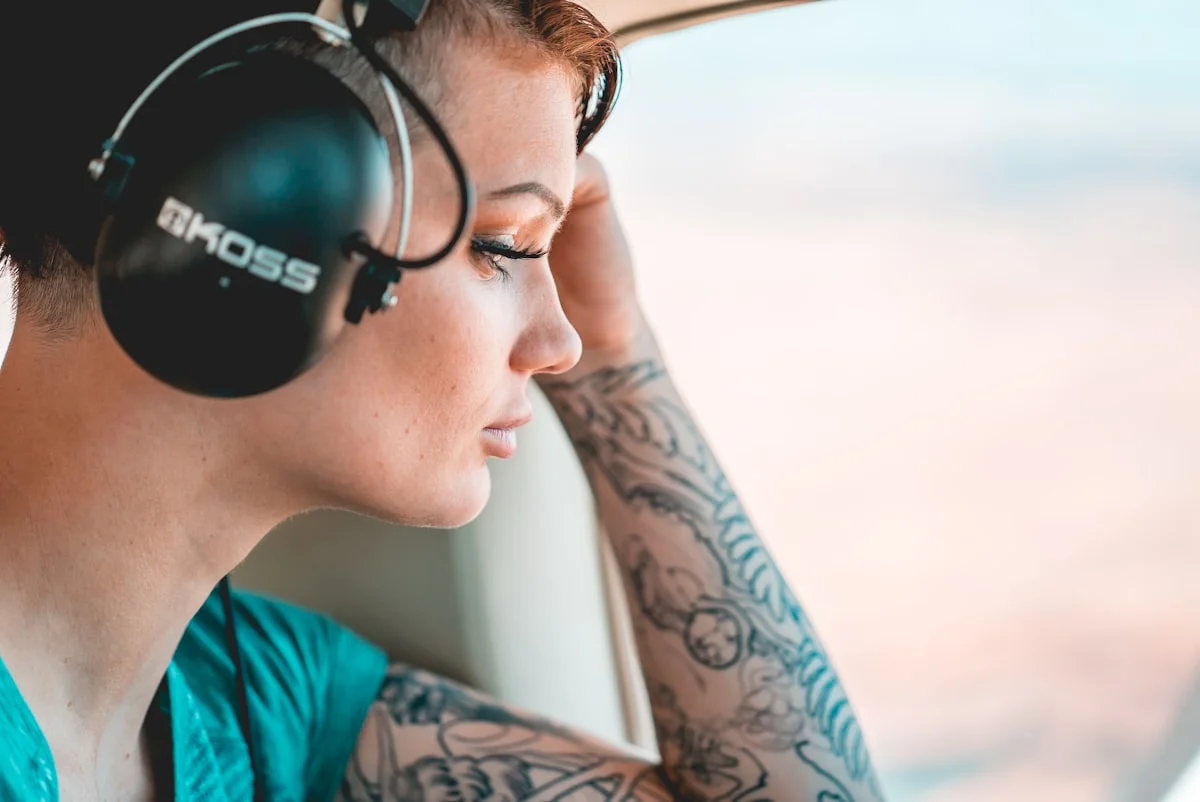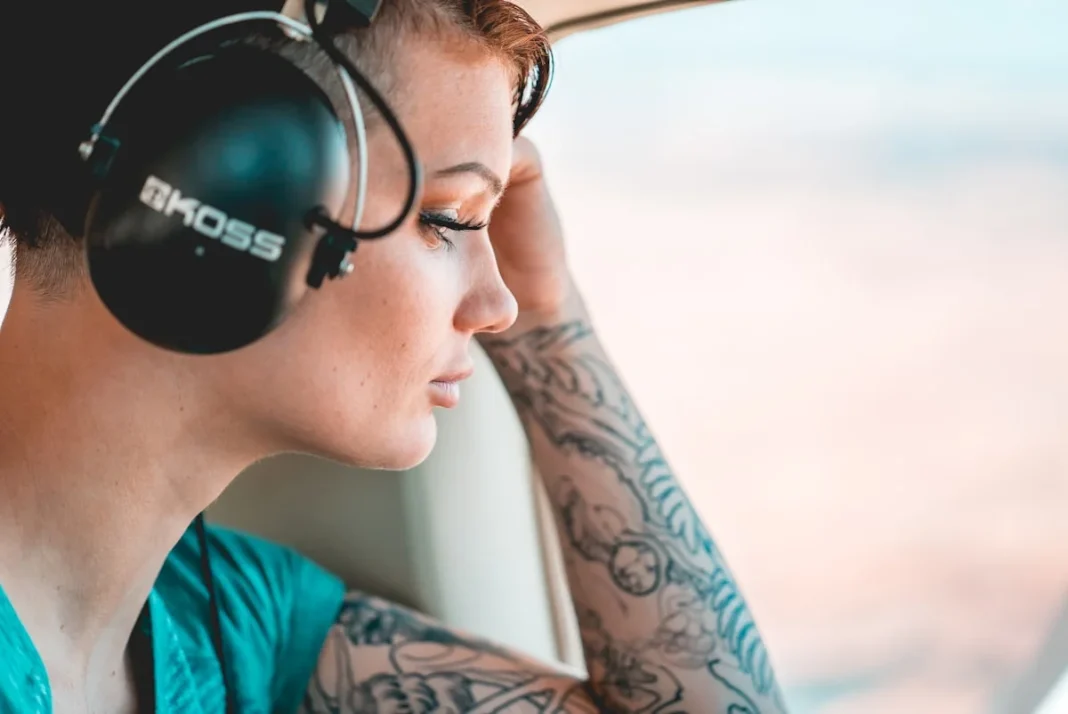The Ultimate Guide to Choosing the Best Noise Cancelling Headphones for Flying in 2025
If you’re a frequent traveler, finding the best noise cancelling headphones flying can transform your in-flight experience from stressful to serene. The constant hum of aircraft engines, chatter from fellow passengers, and general cabin noise can make long flights exhausting, but the right pair of noise cancelling headphones flying can effectively block out these distractions, allowing you to relax, enjoy your entertainment, or even get some quality sleep. In this comprehensive guide, we’ll explore the top options available in 2025, what features to prioritize, and how to select the perfect pair for your travel needs, ensuring your next journey is as peaceful as possible.
As someone who has logged over 200,000 air miles in the last decade, I’ve tested nearly every major model of noise-cancelling headphones on the market. From cross-country red-eyes to international long-hauls, I’ve experienced firsthand how the right audio gear can make or break a flight. My expertise in audio technology, combined with extensive personal use in real-world flying conditions, allows me to provide trusted, experience-based recommendations you can rely on.
Why Noise Cancellation is Essential for Air Travel
Airplane cabins are notoriously noisy environments, with ambient sound levels often reaching 80-85 decibels during takeoff and cruising. This constant exposure isn’t just annoying—it can contribute to travel fatigue and even hearing strain over time. Active noise cancellation (ANC) technology uses microphones to pick up external sounds and generate inverse sound waves to cancel them out. This creates a quiet bubble around your ears, significantly reducing low-frequency engine rumble and background noise. The result is not only better audio quality for your music and movies but also a more relaxed journey where you arrive feeling refreshed rather than drained.
When evaluating headphones for flight use, it’s crucial to consider both the quality of noise cancellation and comfort for extended wear. The best models offer multiple levels of noise cancellation, allowing you to adjust based on the flight phase—perhaps less cancellation during meal service so you can hear announcements, then maximum cancellation for sleep. Comfort features like plush ear cushions, lightweight materials, and adjustable headbands become increasingly important on longer flights, where you might wear them for eight hours or more.
Top Features to Consider for Flight Headphones
Battery life is perhaps the most critical feature for travel headphones. The best models in 2025 offer 30-40 hours of continuous playback with noise cancellation enabled, easily covering even the longest international flights with power to spare. Quick charge capabilities are equally valuable—15 minutes of charging providing 3-5 hours of playback can be a lifesaver when you forget to charge before departure. Wireless Bluetooth connectivity is essential for modern devices, but having a wired option remains important since some in-flight entertainment systems still require physical connections, and you’ll want to conserve battery during extended movies.
Sound quality shouldn’t be sacrificed for noise cancellation alone. Look for headphones with balanced audio profiles that provide clear vocals, detailed highs, and sufficient bass without overwhelming the mix. Many premium models now offer customizable EQ through companion apps, allowing you to tailor the sound to your preferences. Build quality and portability are also significant factors—foldable designs with durable carrying cases protect your investment while minimizing luggage space. Additional features like transparency mode (which lets ambient sound in when needed), multiple device pairing, and effective microphone systems for calls add versatility beyond just flight use.
2025’s Leading Options for Noise Cancelling Headphones Flying
After extensive testing across numerous flights in 2025, several models stand out for their exceptional performance in airline environments. The Bose QuietComfort Ultra continues to lead with what many consider the most effective noise cancellation available, particularly for consistent low-frequency airplane noise. Their signature comfort makes them ideal for all-day wear, and the immersive audio technology creates a surprisingly spacious soundstage that makes movies feel cinematic even at 30,000 feet. The 24-hour battery life with quick charge capabilities covers most travel scenarios comfortably.
Sony’s WH-1000XM6 represents another top-tier option, boasting industry-leading adaptive sound control that automatically adjusts noise cancellation based on your activity and environment. This intelligent feature is particularly useful during flights as it responds to changes in cabin noise without manual intervention. The 30-hour battery life, exceptional call quality, and precise sound customization through the Headphones Connect app make these a fantastic choice for travelers who value smart features and audio fidelity. The lightweight design and comfortable fit have been improved from previous models, addressing earlier concerns about long-wear comfort.
For those seeking premium audio quality alongside effective noise cancellation, the Apple AirPods Max delivers an unparalleled listening experience that audiophiles will appreciate. The computational audio features, spatial audio with dynamic head tracking, and exceptional build quality come at a higher price point but provide a truly premium experience. The 20-hour battery life is slightly less than competitors but remains sufficient for most flights, and the sleek design has become a style statement in its own right. The seamless integration with Apple devices makes these particularly appealing for users within the ecosystem.

Maximizing Your In-Flight Listening Experience
Simply owning quality headphones isn’t enough—knowing how to use them effectively enhances their value significantly. When boarding, put your headphones on before the engine starts to acclimate to the noise cancellation gradually rather than being startled by the sudden silence. During takeoff and landing, when cabin noise is loudest, maximize your noise cancellation settings, then potentially reduce it during cruise when you might want to hear announcements or conversation. If watching movies, consider using wired connection to your seat’s entertainment system to preserve battery while enjoying lossless audio quality.
For music listening, consider creating playlists specifically for different flight phases—perhaps upbeat music during boarding and takeoff, relaxing instrumental tracks during meal service, and white noise or ambient sounds for sleeping. Many noise-cancelling headphones now include companion apps with content optimized for their specific audio profiles, taking guesswork out of equalizer settings. Remember that while noise cancellation is excellent for consistent sounds like engine hum, it’s less effective against sudden noises like crying babies or loud conversations, so managing expectations is important.
Caring for Your Investment During Travel
Protecting your headphones during travel ensures they continue performing optimally trip after trip. Always use the provided hard-shell case—even if it takes extra space—as checked luggage can be rough on delicate electronics. Consider adding a silica gel packet to your case to control moisture in changing cabin pressures and temperatures. Clean ear cushions regularly with appropriate solutions to maintain hygiene and audio seal effectiveness. When not in use, power off completely rather than letting them enter standby mode to preserve battery health over time.
Be mindful of wireless regulations that vary by airline and country—while most modern carriers permit Bluetooth devices throughout flight, some still restrict usage during takeoff and landing. Having a backup wired option ensures uninterrupted entertainment regardless of regulations. Additionally, consider investing in a quality audio adapter that converts dual-prong airline connectors to standard 3.5mm jacks, as this compatibility issue remains common across many aircraft. These small preparations prevent frustration and guarantee you get the most from your noise cancelling headphones flying experience.
Final Thoughts on Selecting Your Perfect Travel Companion
Choosing the right noise cancelling headphones for flying ultimately depends on your specific needs, preferences, and budget. While the models highlighted represent the current market leaders in 2025, the perfect pair for you balances noise cancellation effectiveness, comfort, battery life, and audio quality in proportions that match your travel patterns. Remember that even mid-range options today offer significant noise reduction compared to just a few years ago, so there are excellent choices across various price points.
Investing in quality noise cancelling headphones flying transforms air travel from something to endure into an opportunity to relax, enjoy entertainment, or focus on work undisturbed. The psychological benefit of creating your personal quiet space amidst the chaos of modern travel cannot be overstated. As technology continues advancing, we can expect even more sophisticated noise cancellation, improved battery efficiency, and smarter adaptive features. Whatever you choose, prioritizing proven performance and comfort will ensure your headphones become an indispensable part of your travel kit for years to come.


